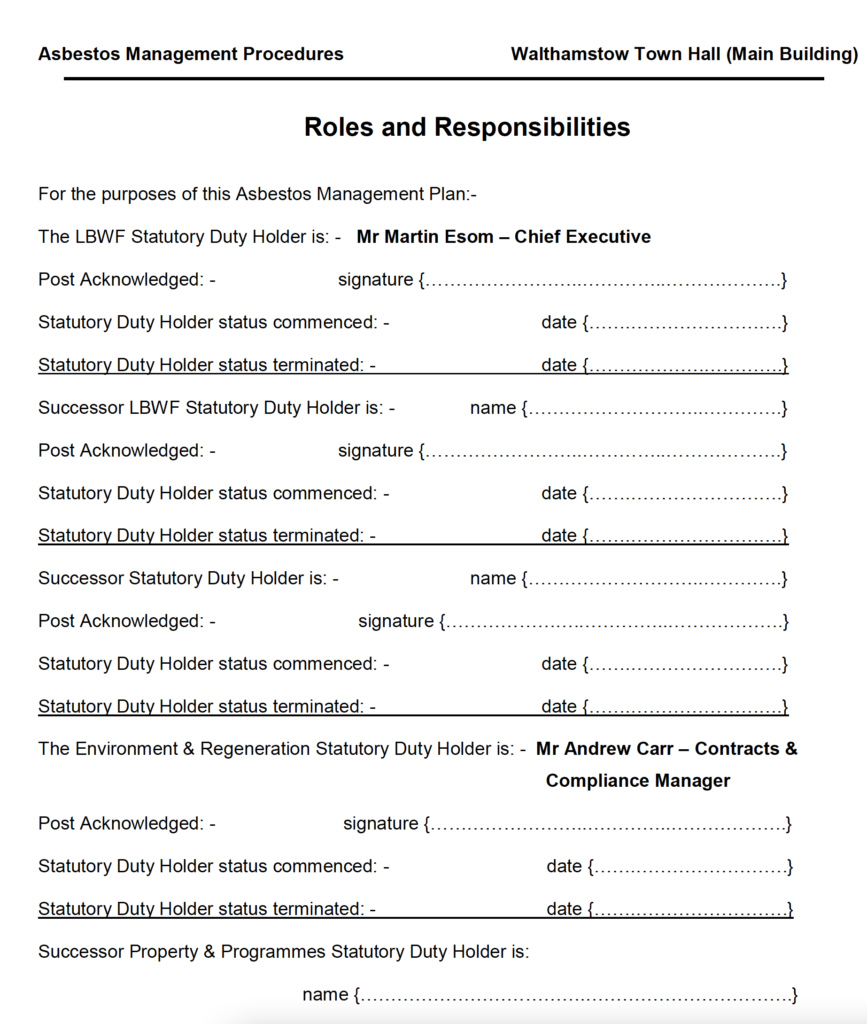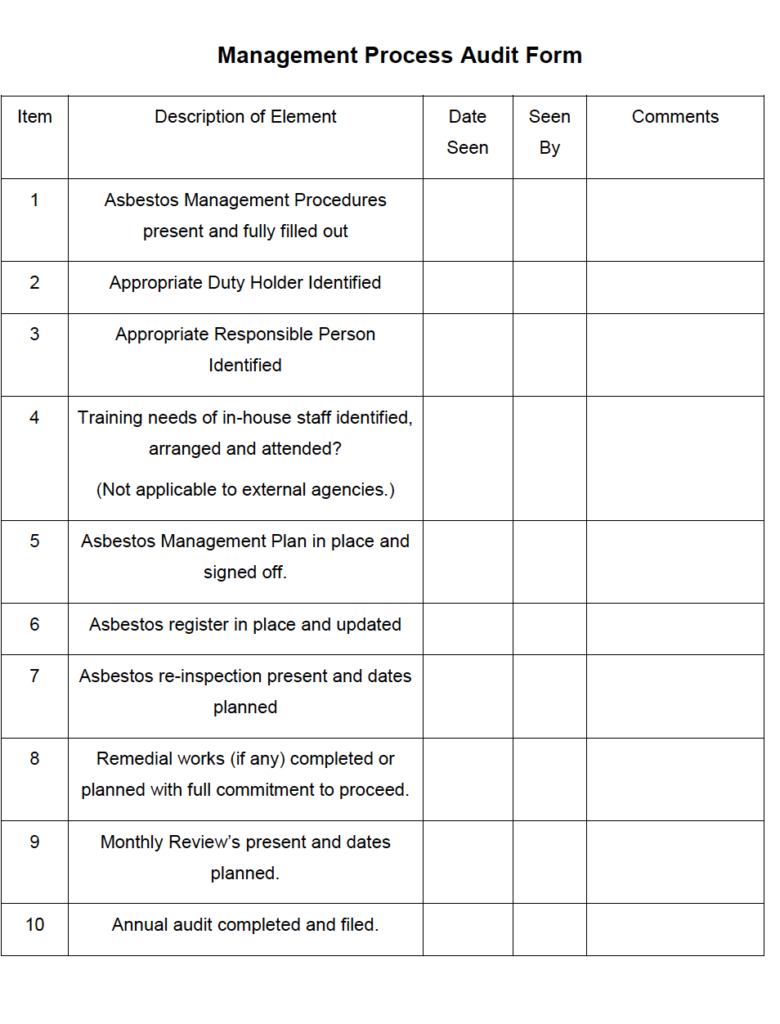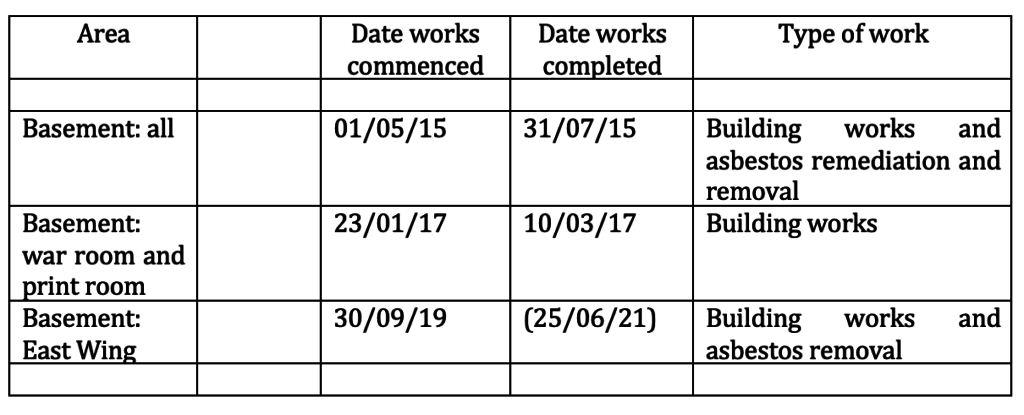Is LBWF involved in covering up the danger that Town Hall asbestos has posed to its staff and contractors?
This blog is highly sceptical about conspiracy theories and allegations of cover ups.
But sometimes the facts of a case are so striking that it is easy to see why even the most sober observers will judge such scepticism to be misplaced, indeed naive.
Consider the following.
First, the background.
In 2015, the government’s Health and Safety Executive (HSE) successfully prosecuted LBWF for exposing staff and contractors to dangerous asbestos dust. Much of the evidence heard in the court case related to asbestos in the Town Hall basement.
During the proceedings, and in attempted mitigation, LBWF CEO Martin Esom stated under oath: ‘As a result of…the HSE investigation, LBWF have deployed a significant amount of time and indeed financial resource …to ensure there is no further repetition’.
More recently, an ex-employee won compensation worth hundreds of thousands of pounds from LBWF after he was exposed to asbestos in the Town Hall basement between 1980 and 1997.
His solicitor was quoted by the Waltham Forest Echo as commenting: ‘“I think this is the worst example of neglect of asbestos in a public building that I have seen in 30 years”’.
Court documents show that the case was won in large part on the basis of evidence that had emerged at the 2015 trial.
And now the foreground.
Fact One
Sometime in late 2019 or very early 2020, a complaint was made to the HSE which the latter summarised as follows:
‘Drilling in the [Town Hall] basement is causing a lot of brick dust to go throughout the buildings, so much that it is setting off the fire alarms; and
With the presence of asbestos in the basement, there is a risk to [sic] possible exposure to asbestos particles in the brick dust produced by the drilling’.
Fact Two
After being questioned about this by the HSE, LBWF’s Head of Health and Safety responded on 14 January 2020 that an investigation had occurred, as well as daily air monitoring, and a report was being compiled.
He added:
‘The Health and Safety Team investigation has not identified any asbestos issues, as the basement was fully stripped of Asbestos [sic] several years ago’ [emphasis added].
And that, as far as can be told, was the end of the matter.
Fact Three
Nine months later, Environtec Ltd. carried out a detailed investigation of the Town Hall, and found dangerous asbestos present throughout, but most of all in the basement, where there were 17 locations it judged ‘high priority/risk’ and 66 it judged ‘medium priority/risk’.
Environtec Ltd. also noted that the asbestos in the basement included significant amounts of amosite (the most dangerous variant, having ‘very sharp barbed fibres which are resistant to body chemical dissolving mechanisms, so once embedded in the lungs cannot be removed’) and was in part present in ‘debris’ on the floor, or ‘exposed’ on walls and ceilings.
And some more…
In an e-mail of July 2022, Mr. Esom claimed that since 2015 ‘we have had a management plan for asbestos’, and ‘Where works have been undertaken to remove and/or make safe areas where asbestos exists appropriate measures have been taken. These measures included: the restriction of access to staff and the public in areas where works were taking place; informing staff about the works; and clear signage and barriers put in place to prevent access to those areas by staff and/or visitors’.
After questioning under the Freedom of Information Act, it has emerged that:
(a) The ‘management plan for asbestos’ that Mr. Esom cites dates from 2013, contains no revisions, and is in important places incomplete and/or unsigned, as these page excerpts show:
(b) Between 2015 and 2020, most of the Town Hall basement remained open to staff and contractors, with closures confined to the following:
(c) LBWF has no list of those staff or contractors who visited the basement between 2015 and 2020; and
(d) after 2015, LBWF senior managers communicated to staff only once (in July 2018) about asbestos in the Town Hall basement.
Conspiracy, cover-up, cock up, a mountain out of a molehill?
Take your pick.




